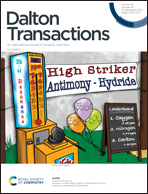Rapid fabrication of oxygen defective α-Fe2O3(110) for enhanced photoelectrochemical activities†
Abstract
Defect engineering is increasingly recognized as a viable strategy for boosting the performance of photoelectrochemical (PEC) water splitting using metal oxide-based photoelectrodes. However, previously developed methods for generating point defects associated with oxygen vacancies are rather time-consuming. Herein, high density oxygen deficient α-Fe2O3 with the dominant (110) crystal plane is developed in a very short timescale of 10 minutes by employing aerosol-assisted chemical vapor deposition and pure nitrogen as a gas carrier. The oxygen-defective film exhibits almost 8 times higher photocurrent density compared to a hematite photoanode with a low concentration of oxygen vacancies which is prepared in purified air. The existence of oxygen vacancies improves light absorption ability, accelerates charge transport in the bulk of films, and promotes charge separation at the electrolyte/semiconductor interface. DFT simulations verify that oxygen-defective hematite has a narrow bandgap, electron–hole trapped centre, and strong adsorption energy of water molecules compared to pristine hematite. This strategy might bring PEC technology another step further towards large-scale fabrication for future commercialization.



 Please wait while we load your content...
Please wait while we load your content...